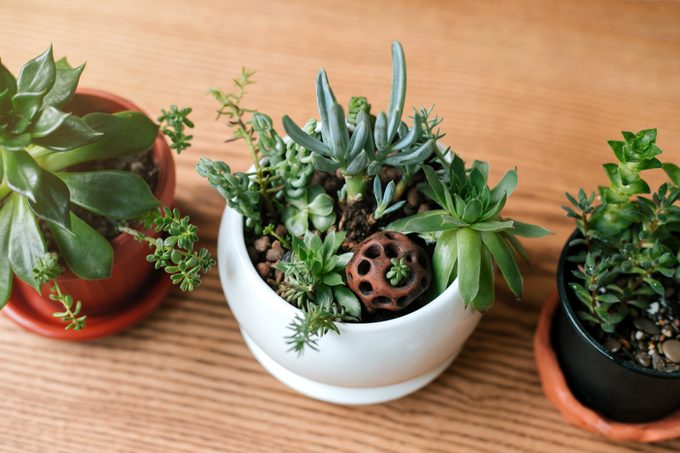It’s all over the news these days, stories about how succulents are the most popular houseplants — particularly among millennials. For many 30-somethings, succulents are replacing getting a cat or dog!
As reported by Alice Vincent for The Guardian, “It seems the millennial appetite for sculptural green houseplant `pets’ has reached its zenith. In an echo of the boom-and-bust disaster of tulip fever in 17th-century Holland, succulent insanity is well on its way to defining our own horticultural age.”
What’s so great about succulents, anyway?
Nothing beats succulents for ease of maintenance. They’re one of the least needy plant types on the planet, requiring minimal care, watering and fertilizing.
Succulents not only need less water, but some, such as aloe vera, have been used for centuries to treat burns, digestive issues and more.
But adaptability is a succulent’s most desirable characteristic. Able to grow almost anywhere, from arid desert climates to frost-prone Northern zones, these plants thrive in the warm outdoors or indoors under grow lights. There are even succulents you can eat, like yucca, dragon fruit and prickly pear.
Want to get on the bandwagon and raise your own “family” of succulents? Here’s what you need to know.
What Is a Succulent?

We asked Angelica Elliott, assistant director of public horticulture at Desert Botanical Garden in Phoenix, what defines a succulent. “A succulent is a plant that can store water in its leaves, stems and/or roots and uses that stored water during periods of drought,” she says.
That’s why you so often see succulents thriving in desert climates.
Fun fact: Did you know you can leave a prickly-pear pad out on a table (without roots) and the water it stores will keep it alive for months? “Many other succulents can live without roots for a long time, too,” Elliott says.
How Often Should You Water Succulents?
That depends on the type and size of the plant. Generally, water succulents when the soil feels dry to the touch. If you’re growing your succulents in containers, Elliott recommends a well-draining potting mix.
Most importantly, beware of overwatering — it’s a common succulent killer. If your succulents look plump and healthy, it’s safe to wait a few more days before hydrating. If leaves appear limp or wrinkled, it’s time to water.
Pro tip: If a succulent is in its dormant stage (a low-growth mode during cold periods), water sparingly.
How Much Sunlight Do Succulents Need?
As with watering, Elliott says that’s contingent on the succulent. “Most succulents need at least six hours a day,” she says. “Some do well with direct sunlight if summer temperatures are mild. However, in deserts (extreme heat), many succulents prefer some afternoon shade.”
To cultivate succulents indoors, grow them under small LED or fluorescent lights. In low-light areas, use grow lights to supplement natural light.
What Is the Best Soil Type for Succulents?
For containers, Elliott recommends potting soil mixed with pumice or perlite (at least a one-to-one ratio). For cultivating outside, Elliott finds many succulents prefer slightly alkaline soil with a well-draining sandy or silty mix.
Although succulents can be grown in clay soil, it’s a good idea to add a few inches of succulent-friendly, well-draining topsoil mix like the one mentioned above.
In What Temperatures Do Succulents Grow Best?
Generally, succulents prefer temperatures between 70 and 95 degrees, with the optimum conditions landing at the higher end of the spectrum.
Contrary to popular opinion, Elliott says that some succulents can survive frost, especially species from colder areas or higher elevations. Keep in mind that most succulents are OK with a few days of freezing. Prolonged cold, however, can damage them.
How Long Do Succulents Live?
There are thousands of different species of succulents worldwide, so estimated life expectancies vary. Elliott points to the saguaro cactus as an example of a succulent with extreme staying power, living an average of 75 years or more.
To ensure your succulents live long and thrive, providing proper care and attention is the key.
Article source here: How To Take Care of Succulents


No comments:
Post a Comment